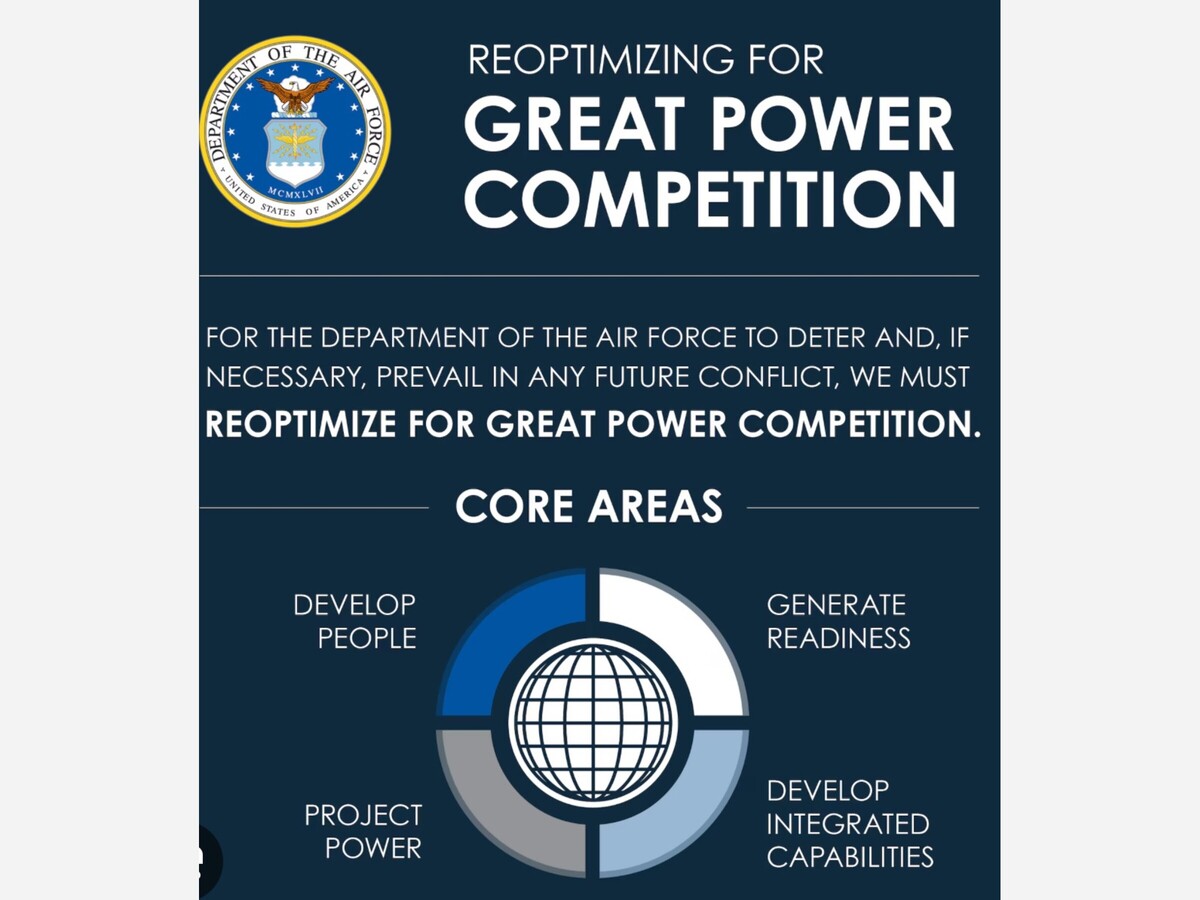Image

The new President Trump appointed Secretary of Defense, Pete Hegseth has ordered the Department of the Air Force to stop its major reorganization effort until Congress approves new leadership under a administration directive.
The fate of the Department of the Air Force’s reorganization efforts must wait until new leadership is confirmed by Congress. Those confirmation hearings have not yet been scheduled. President Donald Trump nominated Troy Meink, current deputy of the National Reconnaissance Office, to serve as the DAF’s next secretary. Matthew Lohmeier, who previously served as a Space Force lieutenant colonel but was relieved from his post in 2021, has been tapped to serve as the DAF’s undersecretary.
The directive defense secretary directive was first reported by Air and Space Forces Magazine and effectively puts several plans under the so-called Reoptimizing for Great Power Competition already in motion on hold, including work on standing up an Integrated Capabilities Command and Space Futures Command. The order will not require actions already taken under the effort to be reversed.
In February 2024, the Reoptimizing for Great Power Competition initiative was announced.
Per the Air Force the changes included in the plan are grouped in four main categories – Develop People, Generate Readiness, Project Power, Develop Capabilities – and include:
Develop People
• Consolidate force development functions under an expanded Airman Development Command to provide Airmen a common, mission-focused development and training path.
• Expand technical tracks for officers and create technical tracks for enlisted Airmen; reintroduce warrant officers in IT and Cyber fields to maintain technical leadership in these highly perishable skills.
• Develop “Mission Ready Airmen” with training focused on a mix of skills needed for wartime operational mission readiness.
• Continue to transform leadership development and training at U.S. Air Force Academy, Officer Training School, and ROTC to prepare new officers to effectively lead Airmen and Guardians in the context of Great Power Competition.
• Redesign career paths to produce Guardians that meet our high-tech operational demands.
Generate Readiness
• Reorient Air Combat Command to focus on generating and presenting ready forces to combatant commanders.
• Implement large scale exercises and mission-focused training encompassing multiple operational plans to demonstrate and rehearse for complex, large-scale military operations.
• Incorporate no-notice/limited-notice operational readiness assessments and inspections in the Air Force and Space Force to reflect pacing challenge requirements.
• Restructure key processes related to aviation spares and weapons systems to be data-driven and risk-informed to improve weapon systems health.
• Implement Space Force readiness standards that reflect operations under contested conditions rather than those of a benign environment.
• Conduct a series of nested exercises in the Space Force, that increase in scope and complexity, fit within a broader Department of the Air Force-level framework, and are assessed through a Service-level, data-driven process to measure readiness.
Project Power
• Structure Air Force Operational Wings as mission-ready “Units of Action” categorized as Deployable Combat Wings, In-Place Combat Wings, or Combat Generation Wings. Each will have its own structure, with a redesigned concept of support for agile combat employment or ACE, to ensure the wings are prepared to execute their missions with assigned Airmen and units.
• Establish the relationship between Combat Wings and Base Command. Combat Wings will focus on mission level warfighting readiness and Base Commands will focus on supporting Combat Wings and operating the base in competition, crisis and conflict.
• Elevate AFCYBER to a standalone Service Component Command, reflecting the importance of the cyber mission to the Joint Force and across the Department of the Air Force.
• Formalize Space Force Combat Squadrons as Units of Action, complete activation of the remainder of Space Force Service Components and accelerate implementation of the Space Force Generation model.
Develop Capabilities
• Create a Department of the Air Force Integrated Capabilities Office to lead capability development and resource prioritization to drive Department of the Air Force modernization investments.
• Combine disparate efforts to create the Office of Competitive Activities to oversee and coordinate sensitive activities.
• Create a Program Assessment and Evaluation Office to foster structure and incorporate a more strategic and analytically based approach to resourcing decisions.
• Establish Integrated Capabilities Command to develop competitive operational concepts, integrated requirements, and prioritized modernization plans to align with force design.
• Create a new Information Dominance Systems Center within Air Force Materiel Command (AFMC) to strengthen and elevate the Air Force’s focus on Command, Control, Communications, and Battle Management; Cyber; Electronic Warfare; Information Systems; and Enterprise Digital Infrastructure.
• Strengthen the support to nuclear forces by expanding the Nuclear Weapons Center to become the Air Force Nuclear Systems Center within AFMC. This will provide comprehensive materiel support to the nuclear enterprise; establish a 2-star general officer as the Program Executive Officer for Inter-Continental Ballistic Missiles.
• Refocus the Life Cycle Management Center within AFMC as the Air Dominance Systems Center to synchronize aircraft and weapons competitive development and product support.
• Establish an Integration Development Office within AFMC to provide technology assessments and roadmaps. It will drive alignment and integration of mission systems across centers and provide technical expertise to assess operational concept feasibility.
• Create Space Futures Command, a new field command, that develops and validates concepts, conducts experimentation and wargames, and performs mission area design.
The order is consistent with the Secretary of Defense Pete Hegseth published memorandum to reinforce that the Department of Defense (DoD) has an obligation to the American public to ensure their sons and daughters serve under the best leadership we can provide them. Doing so is a national security imperative. A foundational tenet of the DoD must always be that the most qualified individuals are placed in positions of responsibility in accordance with merit-based, color-blind policies.
The full memorandum can be read here.